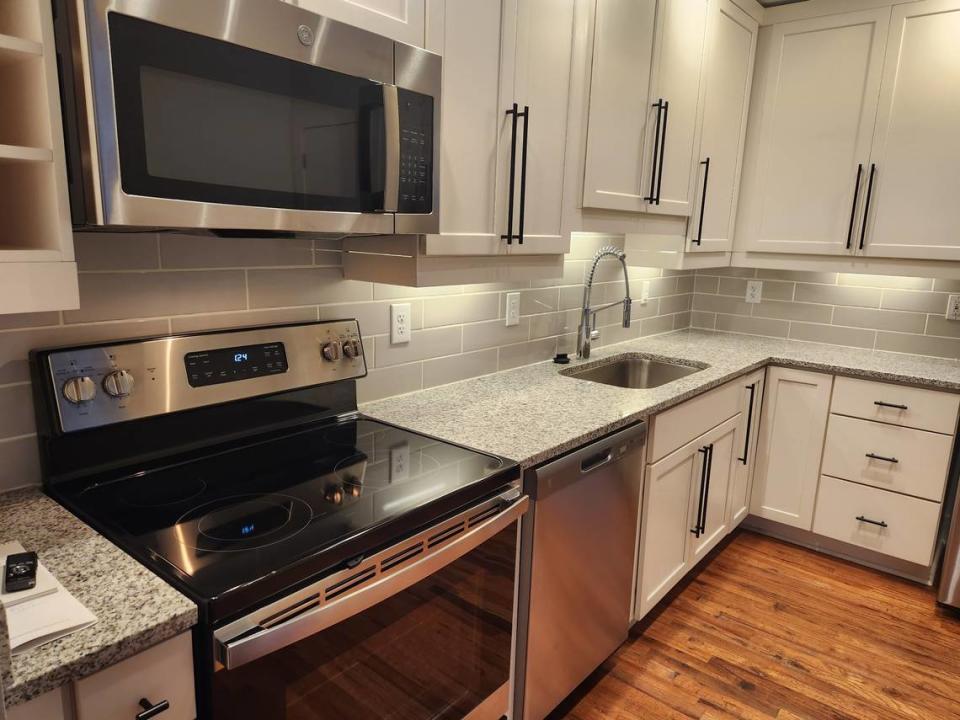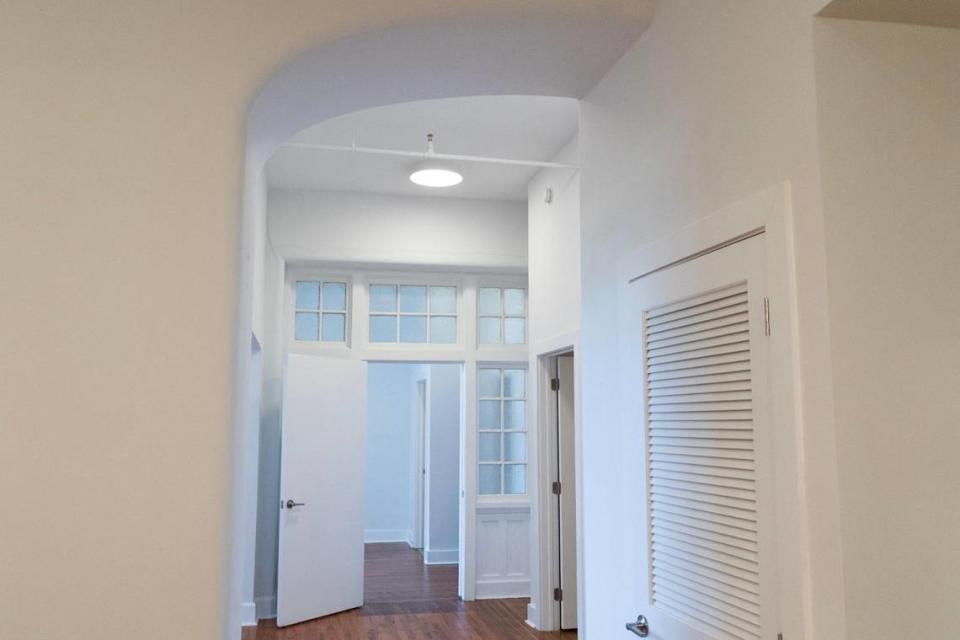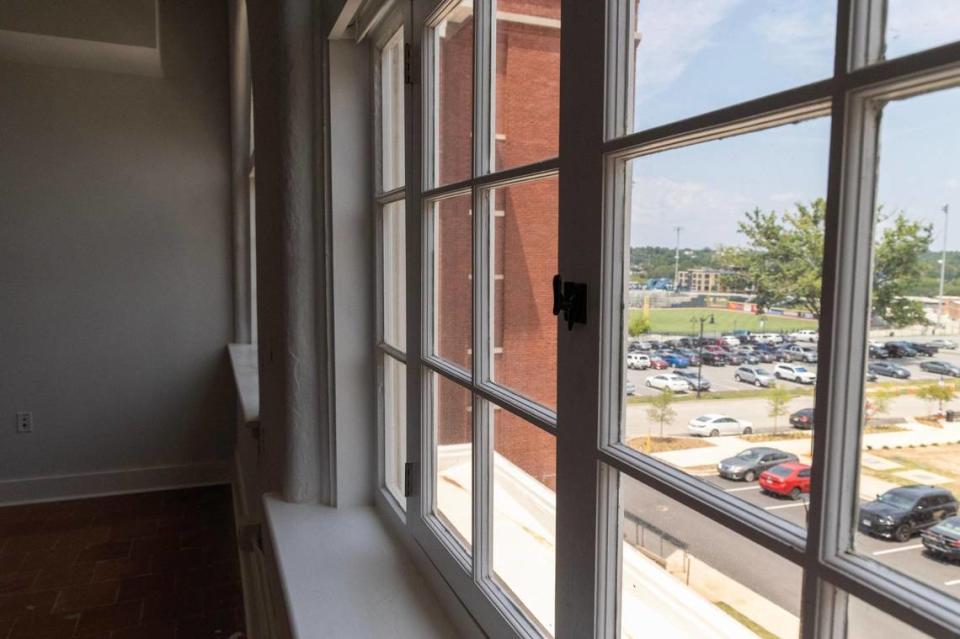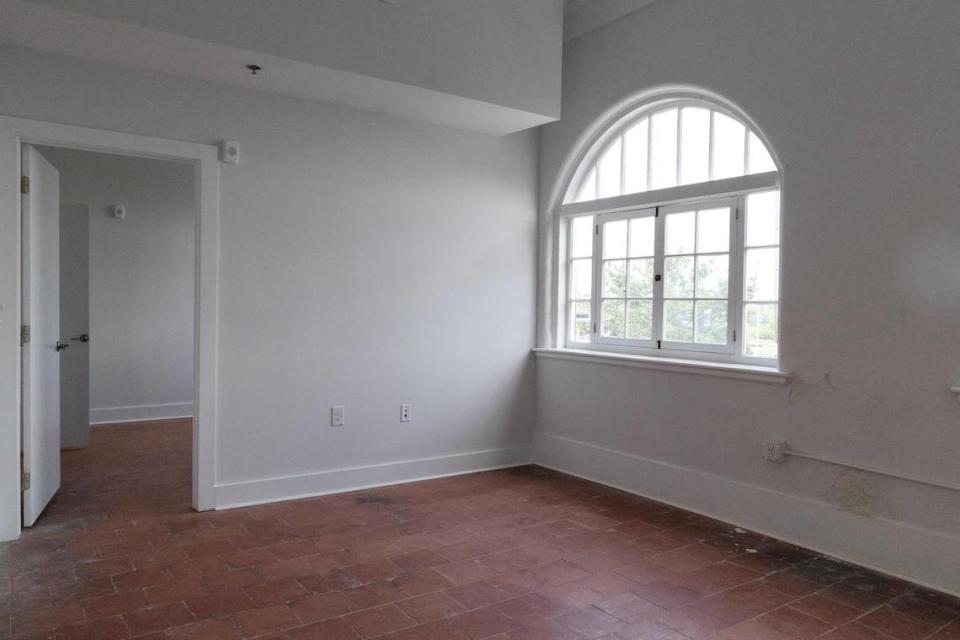‘Platinum standard’: Apartments in historic Babcock Building change the game at BullStreet
As developers and the city of Columbia have worked to reimagine the sprawling former State Mental Hospital site on Bull Street, the restoration and adaptive reuse of the massive Babcock Building was always a prominent piece of the plan.
In September 2020, those plans nearly went up in smoke, literally.
But now, nearly three years after a raging fire damaged the Babcock Building — and destroyed its iconic, instantly recognizable cupola — work to transform the building into 208 luxury apartments, with plenty of amenities, is nearly complete. Officials with Virginia’s Clachan Properties, the developer that took on the nearly $60 million project to transform the building, say that 184 of the complex’s 208 units are either occupied or leased, and the rest are expected to fill up fast.
And the apartment complex — which is called simply The Babcock and features studio, one-, two- and three-bedroom apartments, some of which have a sweeping view of Segra Park baseball stadium — is set to soon have its trademark cupola once again.
On Tuesday, reporters got a look at the hulking, 48,000-pound clerestory upon which the new cupola will rest. The cupola is expected to go back atop The Babcock in early August.
Historic Columbia director of preservation John Sherrer said the transformation of The Babcock, which was built in phases between 1857 and 1885, into hundreds of luxury apartments is a textbook example of the adaptive reuse of an historic structure.
“Somebody was speaking with me earlier and asked, ‘Is this the gold standard in historic preservation?’” Sherrer said. “I said, ‘Not even close. This is the platinum standard.’ This is exactly what you want to show as a model of what can be done with the talent and treasure involved, and with the collective power to take an historic building and respect the character-defining facets and make sure that it is utilized in a way that it is consistent with contemporary needs, while still maintaining those tangible links to our past.”
Reporters from The State got a look inside some of The Babcock’s apartments on Tuesday, including a $1,700-per-month, two-bedroom, two-bathroom unit with views of Segra Park. The apartments in the expansive complex feature modern amenities — granite countertops, stainless steel appliances, etc. — that blend with historic touches, including soaring ceilings and classic hardwood flooring.

The complex also has a game room, a swimming pool (set to open by the end of the month), lounge areas and a yoga studio, among other amenities.
Clachan Properties Vice President Amy Creason said she was moved to tears when the Babcock Building caught fire and was damaged in 2020, just as Clachan was getting cranked up on renovating the property. But now, three years later, she said she thinks the revitalized complex is something in which the Columbia area can take pride.
“This building has quite a bit of history, so for it to be resurrected and for it to be saved and not demolished, and now used for another purpose in creating homes for people, I think it means a lot to the community,” Creason said.
Sherrer said the planned August return of a cupola to the top of The Babcock will be a fitting addition to the renovated complex.
“That will be the kind of crowning glory, if you will, of this National Register (of Historic Places) listed property,” Sherrer said. “This renaissance revival structure has been a conspicuous landmark for not just Columbians, but people coming to the capital city ever since the center portion (of the building) was completed in 1885.”

The city of Columbia and Greenville’s Hughes Development have been busy revitalizing the 181-acre former State Mental Hospital site into the multi-use BullStreet District, and there has been a wave of progress in the last couple years.
The Iron Hill Brewery and Restaurant opened at 945 Sabal St. in June, marking the first Columbia location for the national chain.
A new Publico restaurant opened last year near Segra Park, where the Class A Columbia Fireflies are in the midst of their eighth season.
The Bennet at BullStreet apartments are under construction near the baseball stadium, and Tupelo Honey Cafe, a popular Asheville-based chain known for Southern cuisine, has announced it plans to have a restaurant on the first floor of the Bennet building.
There are residents living in townhomes on the southeastern part of the site, as well as in the Merrill Gardens senior living complex east of the stadium. A Starbucks cafe and an REI outdoor store are located on the western side of the property, near Bull Street.
Meanwhile, the University of South Carolina has long been planning a $300 million medical school campus on the northeast side of the BullStreet property. And accounting firm Elliott Davis will move into BullStreet’s WestLawn office building in the fall. The WestLawn building already is home to Robinson Gray law firm. In the future, there are plans for a food hall to be built in a former church on the property.



